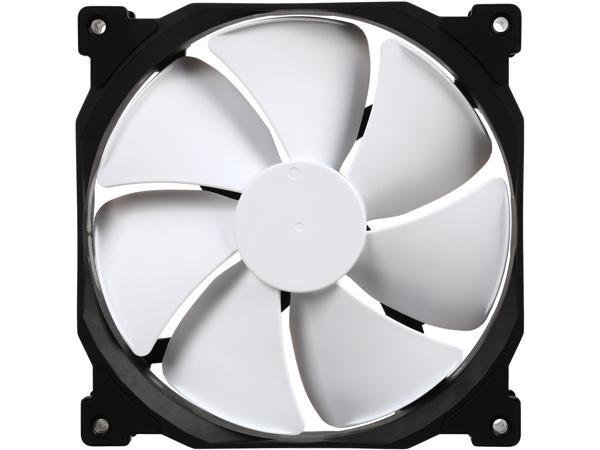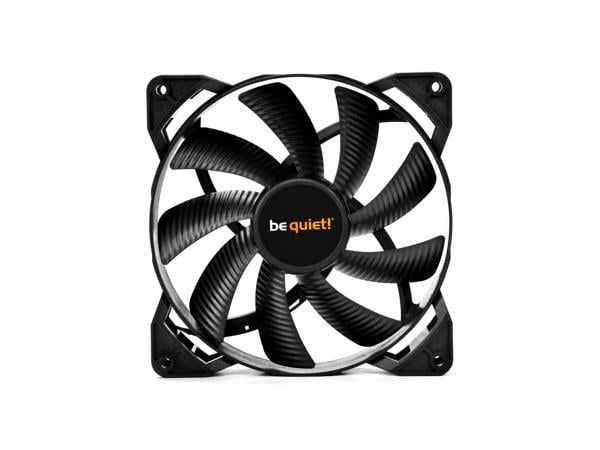I've gotten some good feedback on this on Reddit, but I'd like to see what this community thinks as well.
TLDR: Is it worth it to do push/pull on an AIO rad when not using high static pressure fans and the rad is the only case intake?
OP:
Ok, so:
I'll be moving from a Dark Base 700 to a Phanteks P400A this weekend. I think I've got the fan configuration figured out, but I wanted to run it by you all here because I'm not very experienced with radiators. My GPU is on a Kraken X53 with G12 AIO bracket, and CPU will have a Kraken M22 Bequiet Pure Rock. My proposed configuration:
Front:
2x 140mm Deepcool CF140 (64.13 CFM, 1.09 mmH2O)
NZXT Kraken X63 Radiator (280mm)
2x 140mm Bequiet! Silent Wings 3 (59.5 / 101.09 CFM, 1.08 mmH2O)
Top:
2x 120mm Bequiet! Pure wings 2 ( 51.4 / 87 CFM, 1.25 mmH2O)
Rear:
1x 120mm Deepcool CF120 (56.5 CFM, 1.63 mmH2O)
NZXT Kraken M22 Radiator (120mm)
After a great deal of help/advice from u/-UserRemoved-, I am now debating between these two configs:
Front:
2x 140mm Deepcool
X63 Radiator
CPU:
2x 120mm Pure Wings 2
Top:
2x 140mm Silent Wings 3
Rear:
1x 120mm Deepcool
Front:
2x 140mm Deepcool
X63 Radiator
2x 140mm Silent Wings 3
CPU:
1x 120mm Pure Wings 2
Top:
1x 120mm Pure Wings 2
Rear:
1x 120mm Deepcool
Other components:
Ryzen 5 3600 (no OC)
RX 590 (w/ Kraken G12 kit)
MSI B450 Gaming Pro Carbon WiFi
2x 8gb Vengeance 3000
Phanteks P400A
Which of these setups would you go with, and why?
TLDR: Is it worth it to do push/pull on an AIO rad when not using high static pressure fans and the rad is the only case intake?
OP:
Ok, so:
I'll be moving from a Dark Base 700 to a Phanteks P400A this weekend. I think I've got the fan configuration figured out, but I wanted to run it by you all here because I'm not very experienced with radiators. My GPU is on a Kraken X53 with G12 AIO bracket, and CPU will have a Kraken M22 Bequiet Pure Rock. My proposed configuration:
Front:
2x 140mm Deepcool CF140 (64.13 CFM, 1.09 mmH2O)
NZXT Kraken X63 Radiator (280mm)
2x 140mm Bequiet! Silent Wings 3 (59.5 / 101.09 CFM, 1.08 mmH2O)
Top:
2x 120mm Bequiet! Pure wings 2 ( 51.4 / 87 CFM, 1.25 mmH2O)
Rear:
1x 120mm Deepcool CF120 (56.5 CFM, 1.63 mmH2O)
NZXT Kraken M22 Radiator (120mm)
After a great deal of help/advice from u/-UserRemoved-, I am now debating between these two configs:
Front:
2x 140mm Deepcool
X63 Radiator
CPU:
2x 120mm Pure Wings 2
Top:
2x 140mm Silent Wings 3
Rear:
1x 120mm Deepcool
Front:
2x 140mm Deepcool
X63 Radiator
2x 140mm Silent Wings 3
CPU:
1x 120mm Pure Wings 2
Top:
1x 120mm Pure Wings 2
Rear:
1x 120mm Deepcool
Other components:
Ryzen 5 3600 (no OC)
RX 590 (w/ Kraken G12 kit)
MSI B450 Gaming Pro Carbon WiFi
2x 8gb Vengeance 3000
Phanteks P400A
Which of these setups would you go with, and why?



